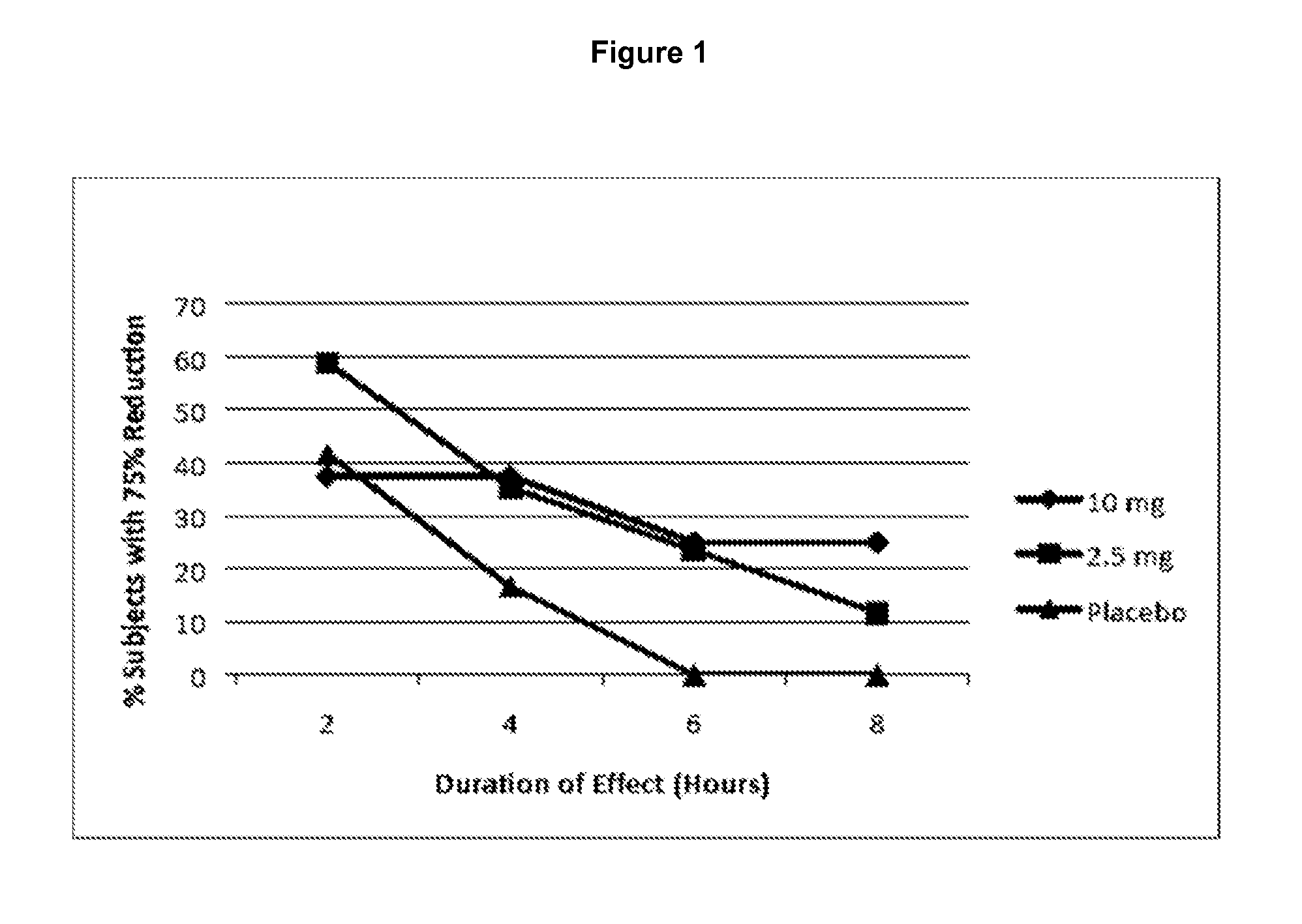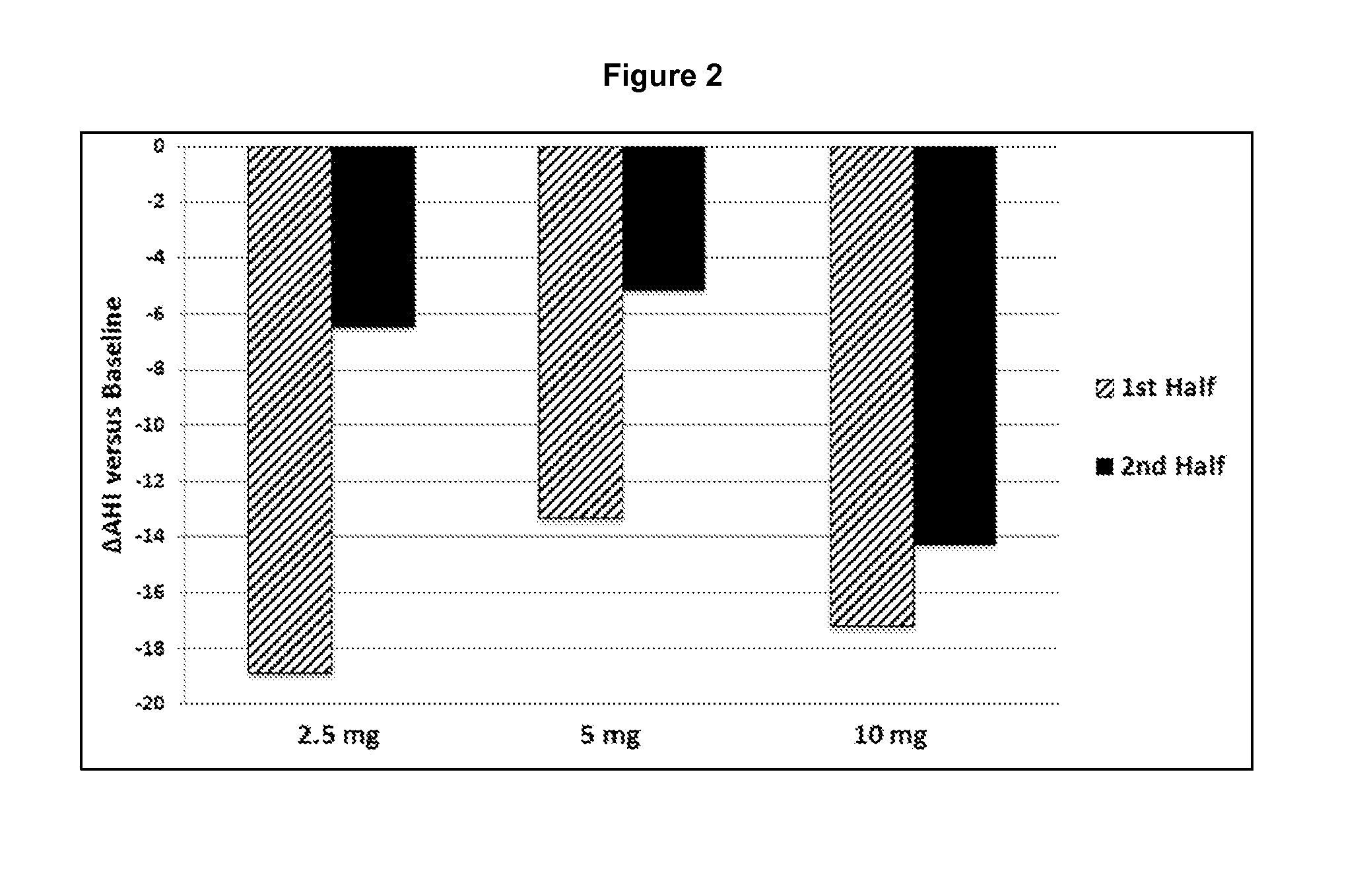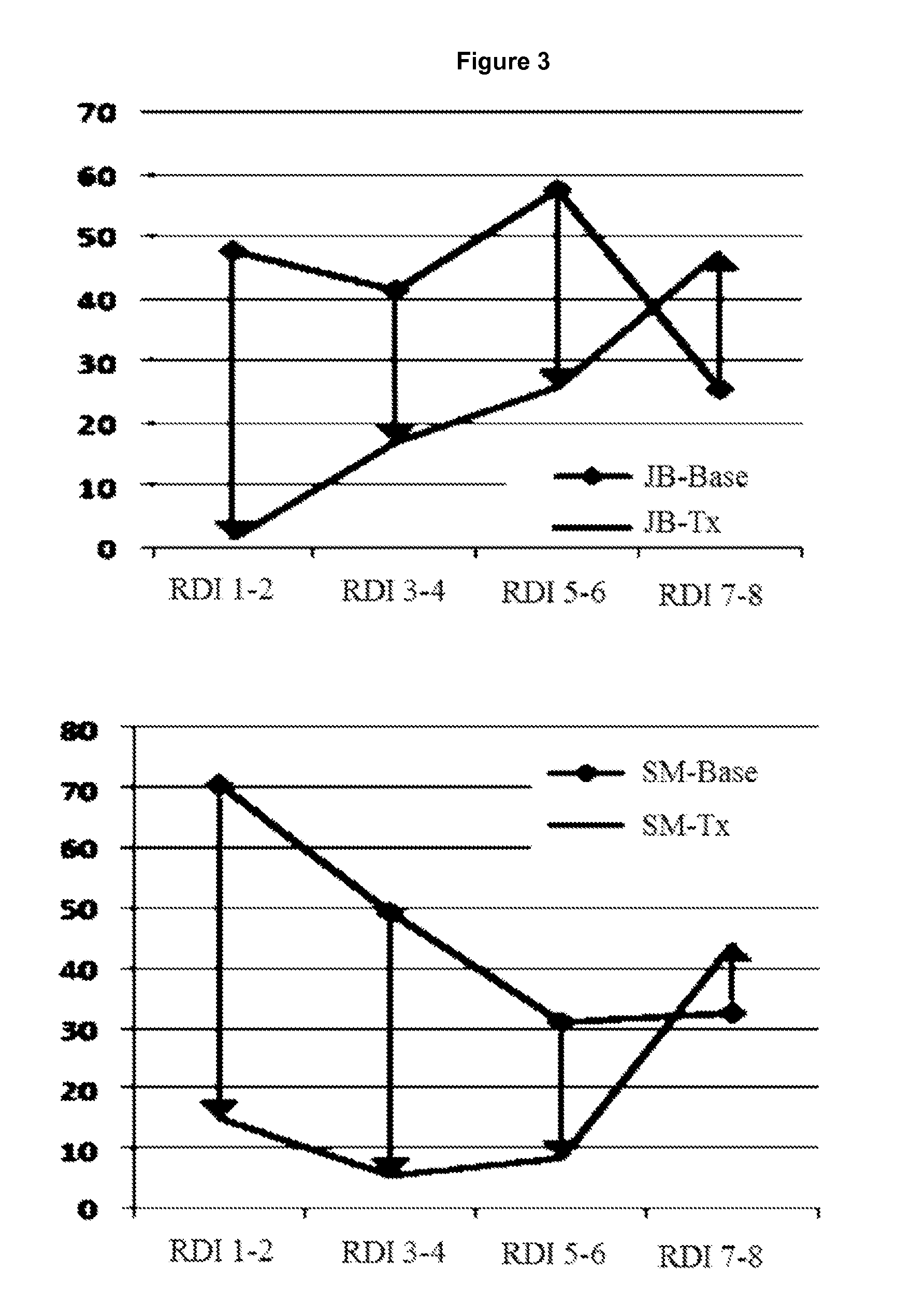Sustained release cannabinoid medicaments
a cannabinoid and medicament technology, applied in the direction of drug compositions, biocides, dispersed delivery, etc., can solve the problems of substantial economic loss, manifesting itself into, and thousands of lost man-hours
- Summary
- Abstract
- Description
- Claims
- Application Information
AI Technical Summary
Benefits of technology
Problems solved by technology
Method used
Image
Examples
example 1
Treatment of Apnea with Marinol
[0231]The goal of the clinical trial was to evaluate oral dosing of THC in sleep apnea patients. One objective was to assess low doses of cannabinoids for treatment of apnea. Another objective was to evaluate the therapeutic window of oral cannabinoid in the treatment of sleep-related disorders such as apnea.
[0232]The trial comprised a single-center, randomized, double-blind, placebo-controlled dose escalation study of dronabinol in 22 patients with OSAS. The study began with a 7-day baseline / PAP-washout period, with polysomnography (PSG) performed on the final night. Subjects meeting inclusion / exclusion criteria were randomized to either placebo (N=5) or dronabinol (N=17) treatment.
[0233]The study drug (active or placebo) was taken 30 min before bed for 21 days. Overnight PSG was performed on treatment nights 7, 14 and 21. The initial nightly dose was 2.5 mg and was escalated, as tolerated, to 5 mg on day 8 and to 10 mg on day 15 of treatment. A blood...
example 2
Marinol for Apnea; Comparing Early and Late Treatment Windows
[0239]The study from Example 1 was further analyzed with respect to Arousal Index during the early treatment window (i.e., T0−T4) and the late treatment window (i.e., T5−T8).
TABLE 6Arousal Index, Early and Late Treatment Window2.5 mg10 mg1st Half of NightNumber of Subjects178Number of238ObservationsMean Change with−20.0−21.9treatment vs PlaceboSignificance vs Placebo0.0670.112nd Half of NightNumber of Subjects178Number of238ObservationsMean Change with0.65.0Treatment vs PlaceboSignificance vs Placebo0.930.56
example 3
Marinol for Apnea: 75% Reduction Analysis
[0240]The study from Example 1 was further analyzed with respect to the percentage of subjects demonstrating a 75% reduction in the AHI for 2-, 4-, 6-, and 8-hour consecutive intervals. As shown in FIG. 1, a dose of 2.5 mg (line with square data points) resulted in greater than 60% of the subjects showing a ≧75% reduction (versus baseline) in AHI for at least 2 consecutive hours. In contrast, a dose of 10 mg (line with diamond data points) resulted in fewer than 30% of the subjects showing a 2-hour reduction in AHI of ≧75%. This same phenomenon was seen with respect to a four-hour response interval. Thus, for a 2 and 4 hour treatment window, 2.5 mg of Marinol was more effective in these patients than a 10 mg dose. In contrast to the expected sigmoidal dose-response curve that typifies most drug therapies, THC effect on cannabinoid-sensitive disorders such as apnea is consistent with a non-monotonic response of the inverted U. Thus, a superior...
PUM
| Property | Measurement | Unit |
|---|---|---|
| Fraction | aaaaa | aaaaa |
| Fraction | aaaaa | aaaaa |
| Fraction | aaaaa | aaaaa |
Abstract
Description
Claims
Application Information
 Login to View More
Login to View More - R&D
- Intellectual Property
- Life Sciences
- Materials
- Tech Scout
- Unparalleled Data Quality
- Higher Quality Content
- 60% Fewer Hallucinations
Browse by: Latest US Patents, China's latest patents, Technical Efficacy Thesaurus, Application Domain, Technology Topic, Popular Technical Reports.
© 2025 PatSnap. All rights reserved.Legal|Privacy policy|Modern Slavery Act Transparency Statement|Sitemap|About US| Contact US: help@patsnap.com



